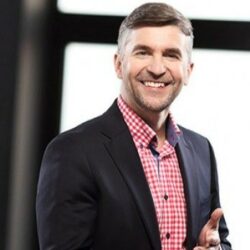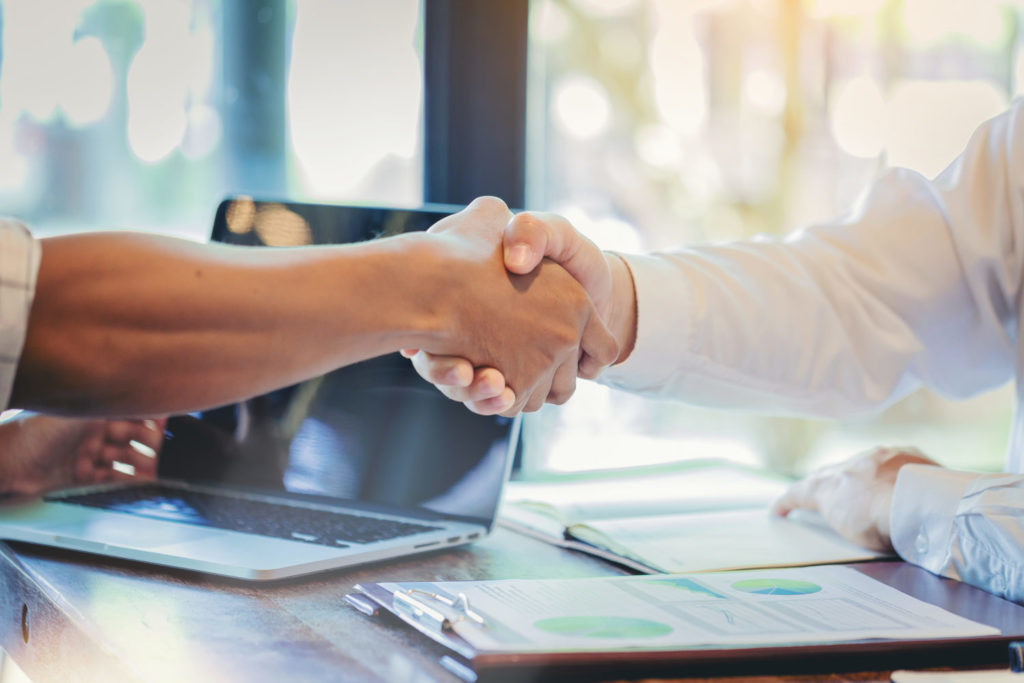
Customer Centric Selling – in company training
Customer centric selling elevates your customer and empathizes with their needs in every stage of the sales process. You adapt to the specific circumstances of the customer by nurturing a two-way dialogue, adjusting to their timeline, and serving as their greatest problem-solving ally.
By focusing on customer centric selling, you elevate the people who matter and create real, resilient relationships that anchor a sustainable revenue stream.
To implement a customer centric approach, you need to shift the way your team thinks about sales. Yes, sales teams need to hit key metrics to maintain a revenue stream. But their actions also must align with the higher purpose of helping people every day. In a customer centric company, the long-term success of the customer trumps short-term gains of the company.
If you want to become more customer centric in your selling efforts make sure to enroll for this training course!
Customer Centric Selling – in company training

Customer centric selling elevates your customer and empathizes with their needs in every stage of the sales process. You adapt to the specific circumstances of the customer by nurturing a two-way dialogue, adjusting to their timeline, and serving as their greatest problem-solving ally.
By focusing on customer centric selling, you elevate the people who matter and create real, resilient relationships that anchor a sustainable revenue stream.
To implement a customer centric approach, you need to shift the way your team thinks about sales. Yes, sales teams need to hit key metrics to maintain a revenue stream. But their actions also must align with the higher purpose of helping people every day. In a customer centric company, the long-term success of the customer trumps short-term gains of the company.
If you want to become more customer centric in your selling efforts make sure to enroll for this training course!
Aims & benefits
By the end of the course delegates will be able to:
- Effectively prepare for meetings with customers.
- Identify and capture new sales opportunities.
- Actively listen, understand, and drive customer needs.
- Control the conversation.
- Present solutions to customers in a persuasive and influential manner.
- Develop customer relations and increase SOW (share of wallet).
- Respond to customer objections.
- Effectively deal with difficult customers.
- Close the sale.
- Summarize and follow-up.
Agenda
Training program: Customer Centric Selling
Introduction
- The Customer Centric Selling Model
- Preparing the call.
- Discovery.
- Pitch.
- Overcoming objections.
- Handling difficult customer interactions.
- Closing.
- Assessing and following-up.
- Transactional selling vs. customer centric selling.
- How can customer centric selling create a trusted advisor perception of the seller.
Preparing the call – 5 step preparation process
- Reviewing the history of cooperation with the client (crm and own notes).
- Defining your objectives for the call.
- Determining what you want to discover and crafting your questions.
- Preparing your proposal and your pitch.
- Preparing all the support material you may need.
- Exercises.
Discovery phase
- 3 layers of needs: company needs, personal rational needs and personal emotional needs.
- Role of questions in the discovery phase.
- Questioning skills exercise: uncovering a customer’s pain points.
- 5Ws and H open-ended questions.
- Advantages of open-ended questions.
- Types of open-ended questions and how to use them.
- High-impact questions.
- Closed questions and when to use them.
- Barriers to effective questioning.
- Variations of open and closed questions: Funnel, TED and Leading Technique.
- Using questions to cross-sell.
- Exercise: Crafting powerful questions for a customer interaction.
- Exercise: Replying with a question.
Active listening
- What is active listening and why it’s important.
- 4 levels of listening.
- Active listening pitfalls.
- Key active listening techniques.
- Exercise: Demonstrating active listening skills.
The pitch
- Exercise: sell this to me!
- Selling through the eyes of a sales representative vs. the customer’s perspective.
- How to create the value of a solution in the eyes of the customer.
- Exercise: turning features into benefits and showing how they meet customer needs.
- 6 principles of persuasion by R. Cialdini.
- Exercise: using 6 principles of persuasion in a sales conversation.
Overcoming objections
- Exercise: typical customer objections.
- Prompting customers to voice their concerns.
- Key facts about objections.
- Dealing with different types of objections.
- The AIR Model (Absorb – Investigate – Respond) for handling objections.
- Exercise: using the AIR Model to deal with customer objections.
Handling difficult customer interactions
- Self-assessment questionnaire.
- 4 behavioral styles.
- Traits of an assertive sales person.
- How and when to be assertive in customer interactions: verbal and non-verbal communication.
- Self-assessment questionnaire scoresheet and results.
- How do you show empathy to customers?
- Exercise: empathy statements in customer interactions.
- How to control your emotions in a heated exchange: taking a balcony perspective.
- Feel-Felt-Found Technique to defuse customer emotions.
- Exercise: Applying the Feel-Felt-Found Technique.
- Dealing with abusive customers.
Closing the sale
- The ABC rule.
- Selected closing techniques.
Assessing and following up
- Impact of the call.
- Personal performance.
- Administration.
- Commitment.
Bringing it all together: role-playing a customer centric meeting
Training program: Customer Centric Selling
Introduction
- The Customer Centric Selling Model
- Preparing the call.
- Discovery.
- Pitch.
- Overcoming objections.
- Handling difficult customer interactions.
- Closing.
- Assessing and following-up.
- Transactional selling vs. customer centric selling.
- How can customer centric selling create a trusted advisor perception of the seller.
Preparing the call – 5 step preparation process
- Reviewing the history of cooperation with the client (crm and own notes).
- Defining your objectives for the call.
- Determining what you want to discover and crafting your questions.
- Preparing your proposal and your pitch.
- Preparing all the support material you may need.
- Exercises.
Discovery phase
- 3 layers of needs: company needs, personal rational needs and personal emotional needs.
- Role of questions in the discovery phase.
- Questioning skills exercise: uncovering a customer’s pain points.
- 5Ws and H open-ended questions.
- Advantages of open-ended questions.
- Types of open-ended questions and how to use them.
- High-impact questions.
- Closed questions and when to use them.
- Barriers to effective questioning.
- Variations of open and closed questions: Funnel, TED and Leading Technique.
- Using questions to cross-sell.
- Exercise: Crafting powerful questions for a customer interaction.
- Exercise: Replying with a question.
Active listening
- What is active listening and why it’s important.
- 4 levels of listening.
- Active listening pitfalls.
- Key active listening techniques.
- Exercise: Demonstrating active listening skills.
The pitch
- Exercise: sell this to me!
- Selling through the eyes of a sales representative vs. the customer’s perspective.
- How to create the value of a solution in the eyes of the customer.
- Exercise: turning features into benefits and showing how they meet customer needs.
- 6 principles of persuasion by R. Cialdini.
- Exercise: using 6 principles of persuasion in a sales conversation.
Overcoming objections
- Exercise: typical customer objections.
- Prompting customers to voice their concerns.
- Key facts about objections.
- Dealing with different types of objections.
- The AIR Model (Absorb – Investigate – Respond) for handling objections.
- Exercise: using the AIR Model to deal with customer objections.
Handling difficult customer interactions
- Self-assessment questionnaire.
- 4 behavioral styles.
- Traits of an assertive sales person.
- How and when to be assertive in customer interactions: verbal and non-verbal communication.
- Self-assessment questionnaire scoresheet and results.
- How do you show empathy to customers?
- Exercise: empathy statements in customer interactions.
- How to control your emotions in a heated exchange: taking a balcony perspective.
- Feel-Felt-Found Technique to defuse customer emotions.
- Exercise: Applying the Feel-Felt-Found Technique.
- Dealing with abusive customers.
Closing the sale
- The ABC rule.
- Selected closing techniques.
Assessing and following up
- Impact of the call.
- Personal performance.
- Administration.
- Commitment.
Bringing it all together: role-playing a customer centric meeting
Experts
THE TRAINING METHODS
Activity Based Learning
The training follows the Kolb cycle and the ABL method (Activity Based Learning).
Workshops
Participants take part in activating exercises preceded by the necessary theoretical introduction.
Feedback
Participants have the opportunity to self-diagnose and receive feedback from the trainer.
Full activation
The trainer presents knowledge using 3 channels of information transfer - sight, movement, hearing.
Discussion
Discussion panel, group and individual exercises, presentation, role playing, case studies and review films.
Opinions
Oceny dla tego szkolenia:
Oceń to szkolenie:
Clients
Organizational informations
How do we prepare our training projects?

Analysing your training needs

Verification of your training aims

Creating a training programme


Logical & administrative settings


Realization of the project
5 reasons you should pick our training:
1. Based on deeply analyse of your training needs, we will recommend you best trainer and programme offer.
2. Through the whole project, there’s gonna be an account manager to take care of your needs.
3. Participants will get all the necessary training materials in very attractive form.
4. We guarantee using variety of training methods through the whole project.
5. Your project will be closed with after training report containing evaluation and reccomendations for the future.

Have questions?
Contact us:
18 Widok St, Apt 2,
00-023 Warsaw
(22) 224 21 95
603 906 655
biuro@humanskills.pl
You might also like
Not sure if it is a training for you?
Rely on our experience and ask for a free consultation:
(22) 224 21 95
Call us
biuro@humanskills.pl
Write an e-mail









